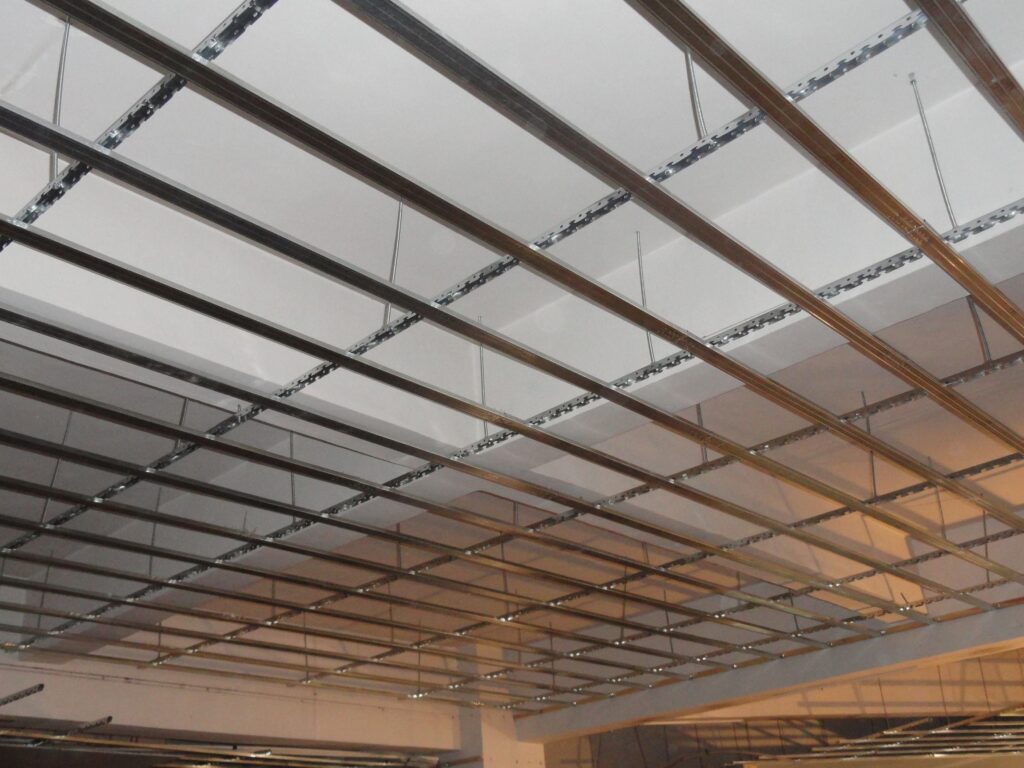
Suspended ceilings provide critical protection and enhance aesthetic appeal in bedrooms. Optimal ceiling decoration choice is vital to augment the creativity and artistry of residential space. When choosing a condominium ceiling steel profile, consider economic, durable, safe, beautiful, and functional aspects.
Moreover, this study-ceiling approach yields substantial benefits for individuals aiming to deepen their understanding and proficiency in a specific field.
- Surface: Condole’s flat ceilings offer a sleek, contemporary aesthetic featuring smooth surfaces with minimal detail, providing a minimalist, minimalist appeal. Construction requires simple basics such as plasterboard, adhesives, and tools. Due to its uncomplicated design, it offers a variety of decorative options for visually captivating ceiling designs. Adding decorative panels such as wood or metal, or surface treatments such as brushing, spraying, wallpapering, or fabric, can infuse a unique touch and tailor a personalized look. From metal borders to exquisite light fixtures, the possibilities for a custom look with a Condole plane ceiling are limitless. (When applying latex paint to a plasterboard splice, priming and sealing the splice with a primer-sealer is recommended to prevent seam cracking.) When installing wood joints, it is crucial to properly seal them with water-based glue or epoxy to prevent water damage and ensure the ceiling’s longevity.
- Concave-Convex: The concave-convex ceiling design, including prominent concave or convex elements, creates an artistic ceiling pattern. This dynamic aesthetic contributes to a heightened sense of elevation. Suitable for hallways, living areas, dining areas, etc., this design adds sophistication to any space. In addition, it displays various lamps and lanterns, enhancing the inviting atmosphere of the room.
Analyze the current relevance and adequacy of comfort ceiling agreements.
Gypsum ceiling board, derived from gypsum plaster, incorporates additives and fibers for optimal light insulation, sound absorption, fire resistance, and sawability. Paired with galvanized steel ceiling profiles, an incredibly durable and aesthetically pleasing ceiling system emerges – ceiling steel profile gypsum board.
The ceiling steel profile efficiently supports a variety of gypsum board types, including paper face, decorative, fiber, and hollow, each with specific specifications to meet various design prerequisites.
- Plasterboard ceilings prevail in commercial spaces for their robustness, withstanding heavy foot traffic and varying environmental conditions. Measuring 600×600 (mm), the ceiling offers a uniform and aesthetically pleasing surface. Usually constructed with aluminum or iron frames, this further bolsters the sturdiness of the ceiling.
- Plywood ceilings are gaining popularity in contemporary interior design, especially in bedrooms, living rooms, study rooms, and other living areas. The material is called plywood because of its production method, which involves machines splitting hardwood logs into large sheets, followed by careful drying and finishing. These sheets are then glued, compacted, hot pressed, and sawn to yield a smooth, consistent surface. The plywood ceiling is lightweight, easy to install and maintain, and has high tensile strength, durability, and shock resistance, making it suitable for high noise and vibration areas. It offers benefits such as easy processing and finishing, insulation, and environmental friendliness, as it is sourced from renewable resources. Smallpox typically uses 5 PCT plywood, a type suitable for arch construction due to its 5 PCT thickness, ideal for creating an arch. However, 3 PCT plywood is too thin, while 9 PCT plywood is too thick, so choosing the appropriate plywood type for the specific application is crucial.
Smallpox’s ability to form intricate shapes to varying degrees, including curvy, angular, and square forms, makes it an attractive option for ceiling finishes.
Smallpox’s vulnerability to termites can cause significant damage due to their rapid consumption of wood. Preservation involves coating the surface with a termite repellent.
A potential problem with smallpox is the deterioration of plywood ceiling paint, causing the surface to appear dull and fade. To correct this, a viable strategy is to apply varnish to the smallpox surface, which shields the wood from moisture and preserves the paint’s longevity. Before applying additional finishing compositions, it is crucial to allow sufficient drying time for the varnish.
Commonly encountered with plywood, surface splitting can result in uneven aesthetics. One solution involves applying putty to seal gaps and avoid splitting. Before additional finishing compositions, ensure thorough drying of the putty.

